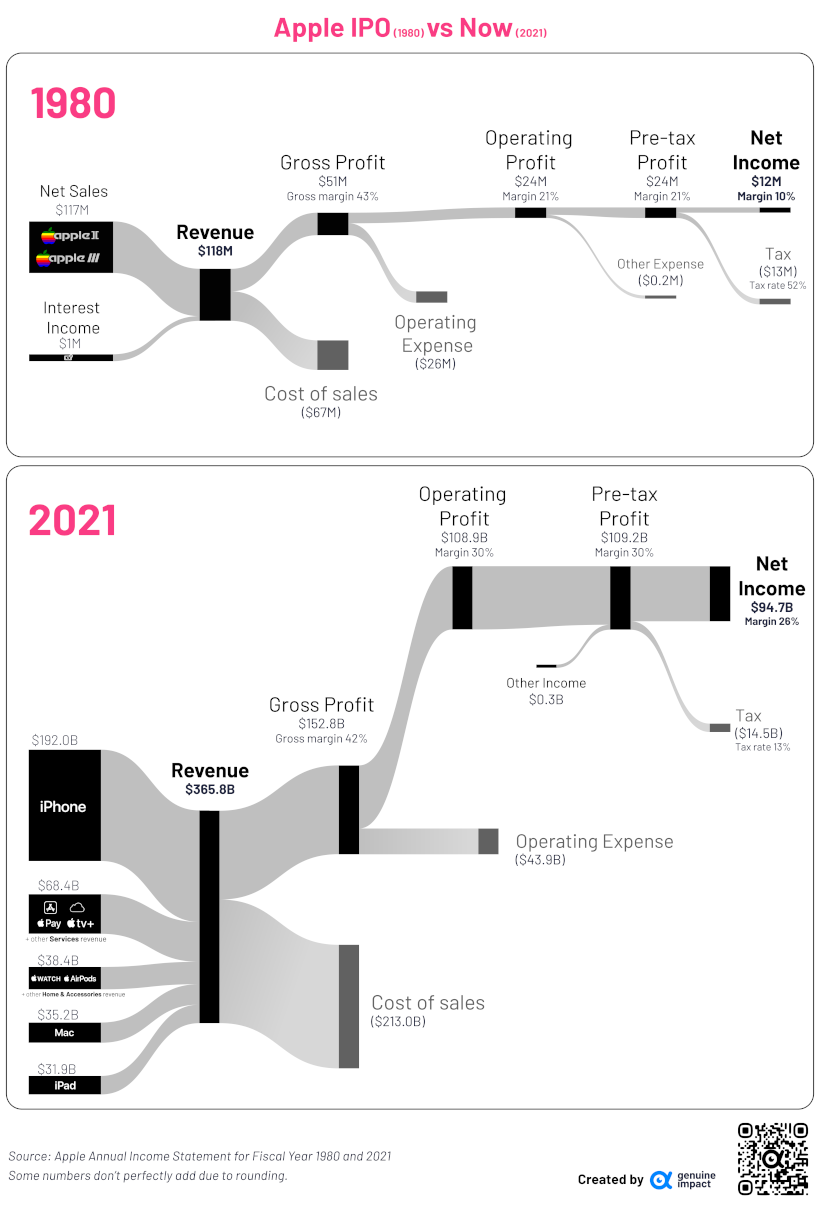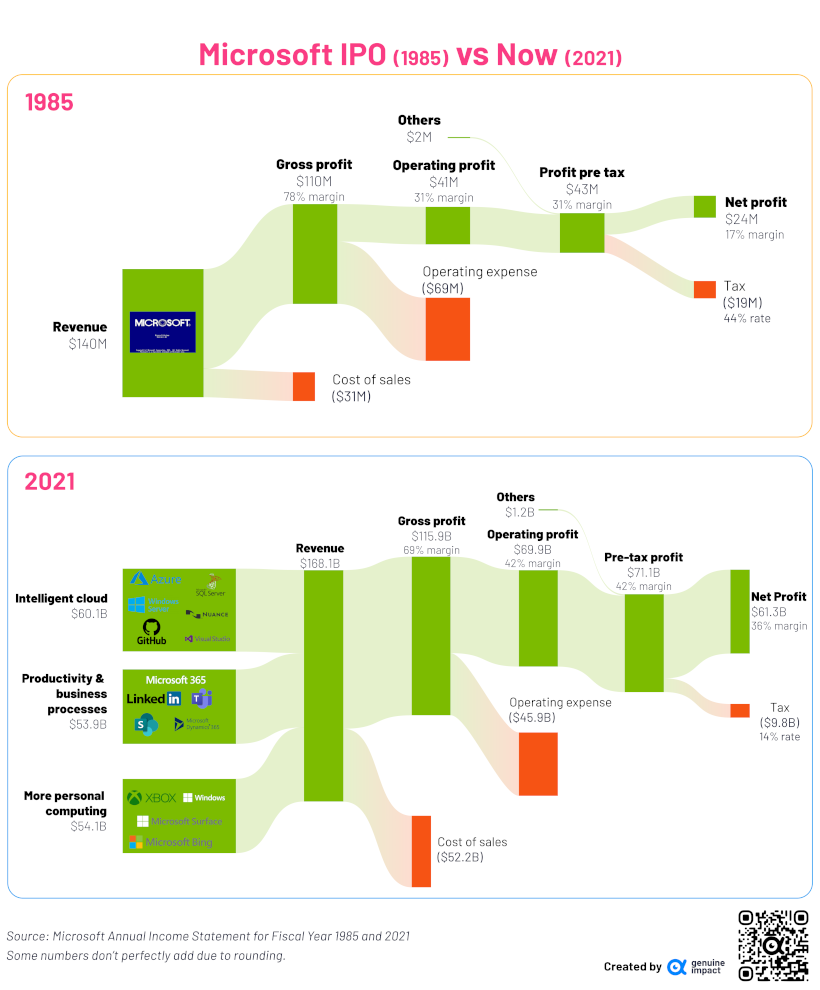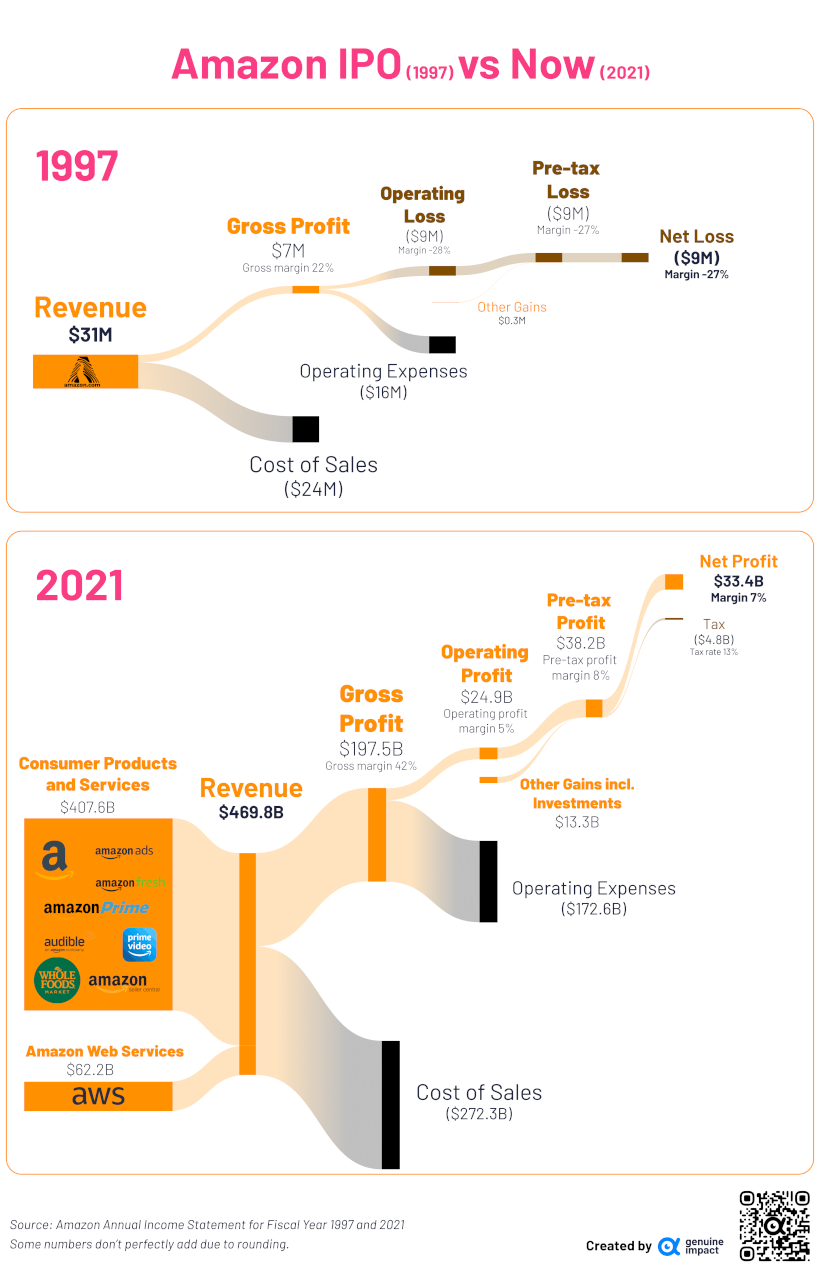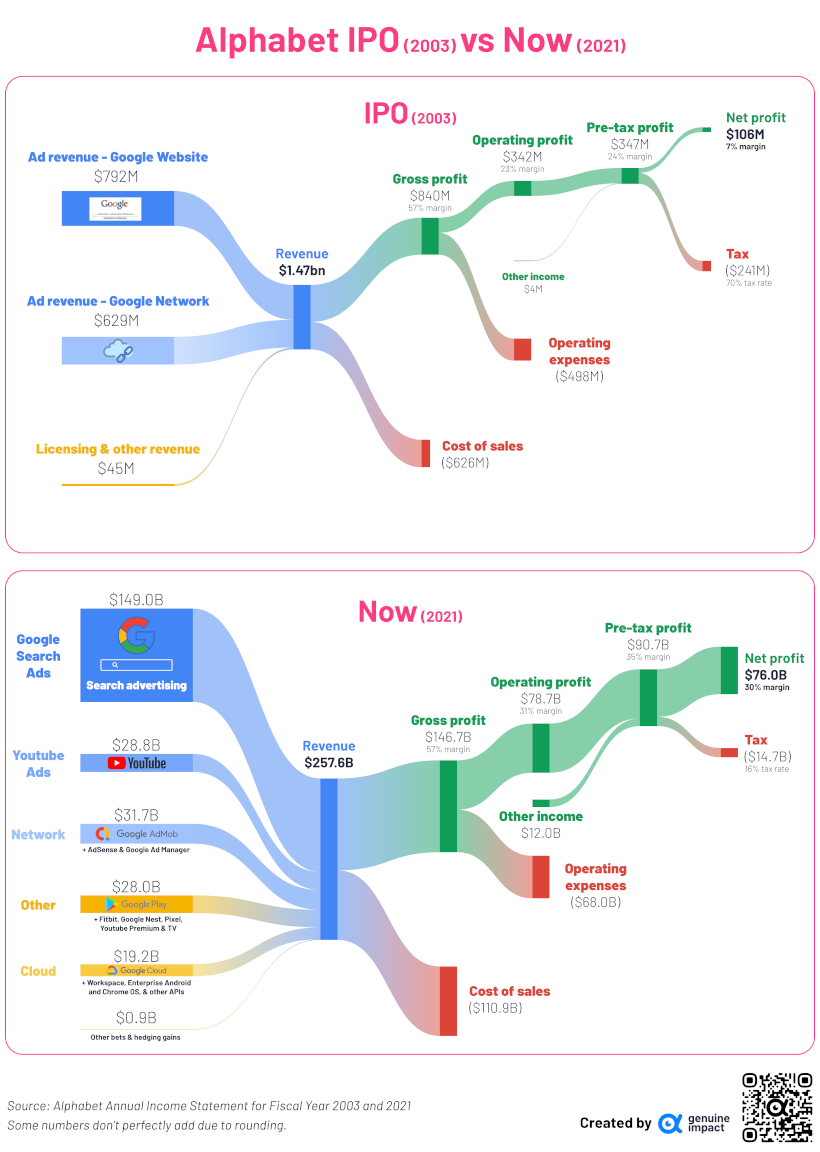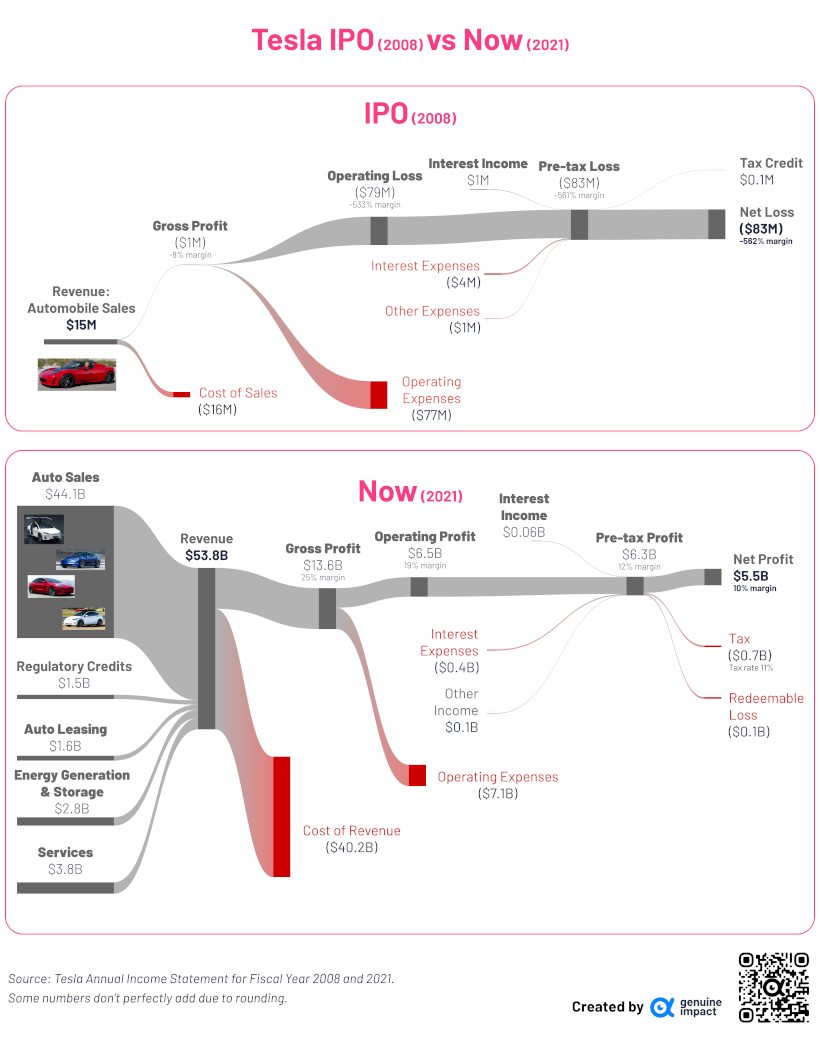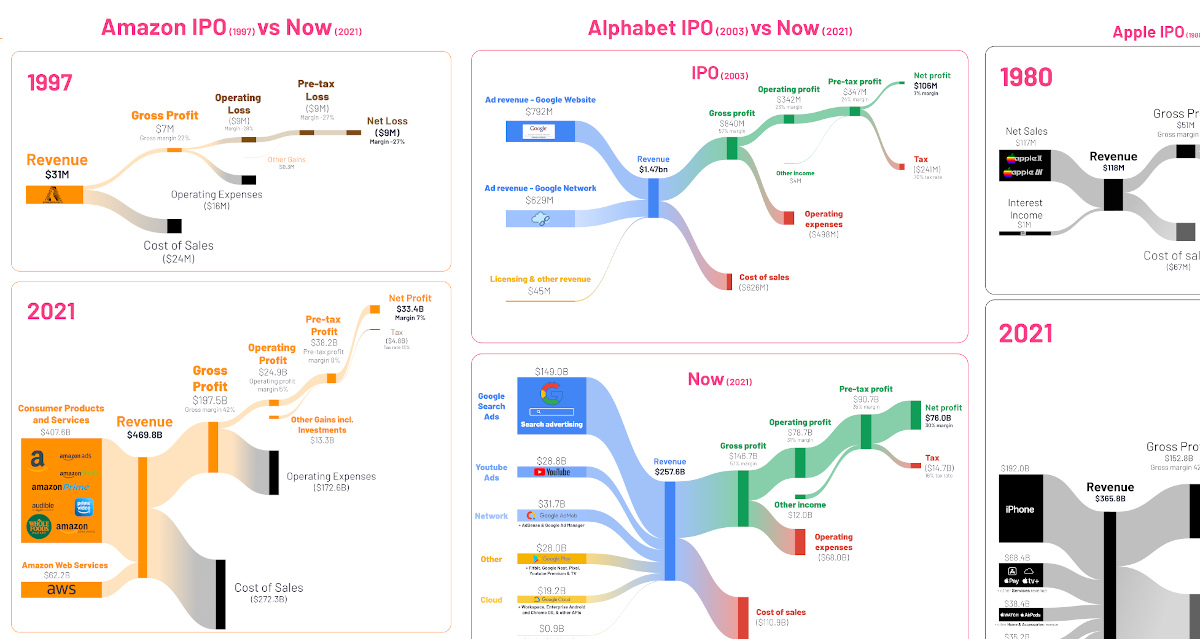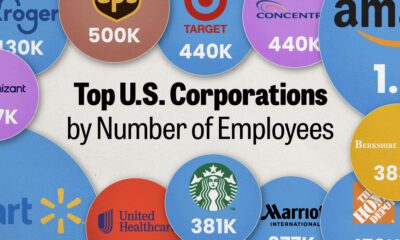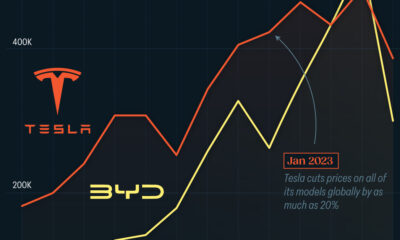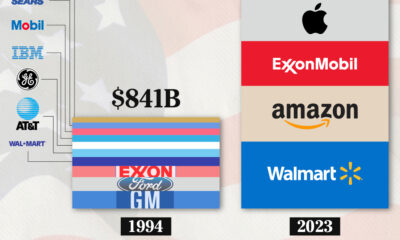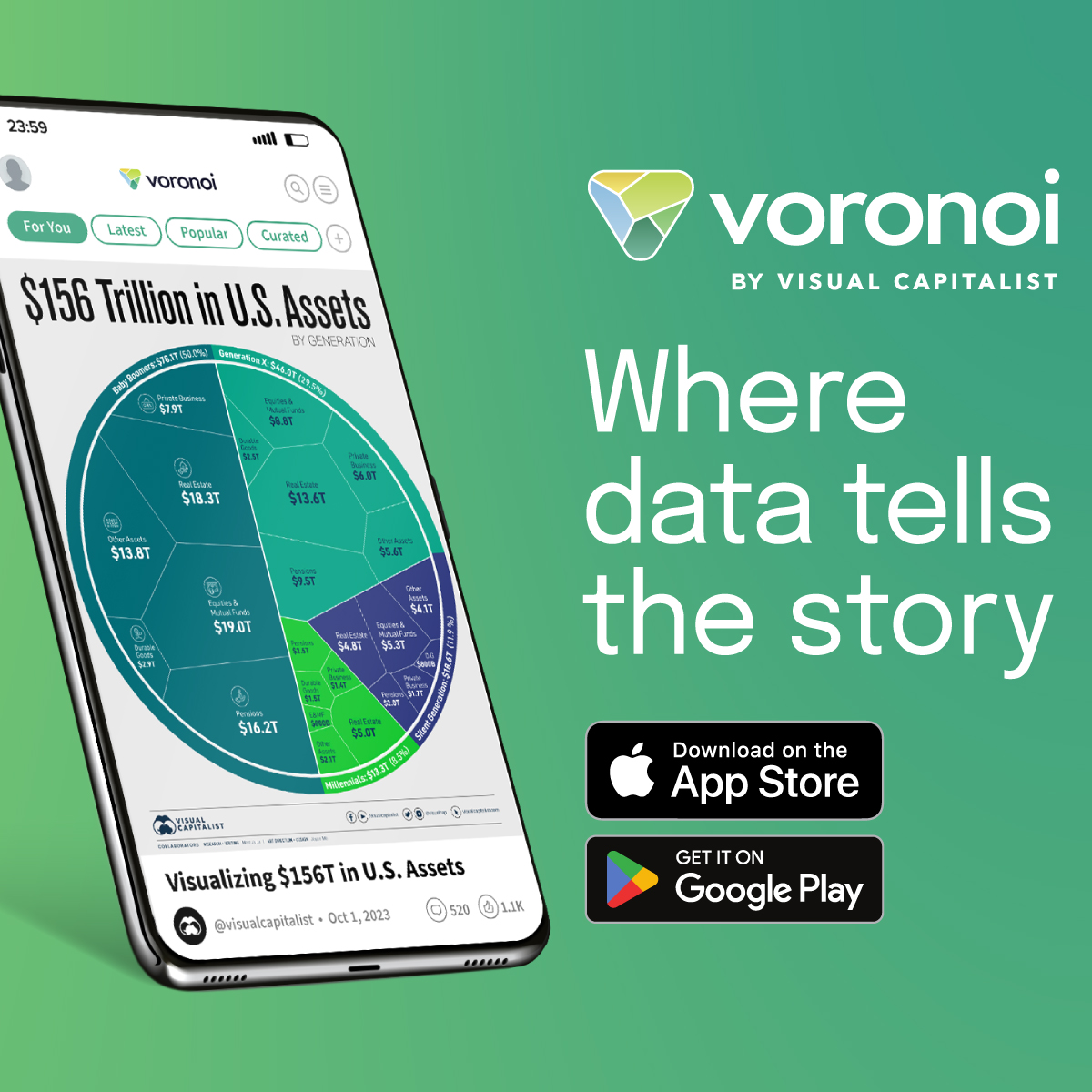Technology
Visualizing Financials of the World’s Biggest Companies: From IPO to Today
In today’s fast-paced world, companies need to adapt if they want to stay relevant. Even the Big Tech giants can’t get too comfortable—to remain competitive, large corporations like Google and Amazon are constantly innovating and evolving.
This series of graphics by Truman Du illustrates the income statements of five of the world’s biggest companies—Amazon, Apple, Microsoft, Tesla, and Alphabet—and shows how their financials have evolved since the date of their very first public disclosures.
Editor’s note: Click on any graphic to see a full-width version that is higher resolution. Also, because these companies are in some cases 10,000x the size they were at IPO date, the two visual financial statements are not meant to be directly comparable in sizing.
Visual Income Statements: From IPO to Today
Let’s start with Apple, the first company to go public, and the biggest in the mix:
1. Apple
View the full-size infographic
Back in 1998, Apple went by the name “Apple Computer,” because at the time, the company only sold computers and computer hardware kits. However, over the next decade, the company expanded its product offerings and started to sell various consumer tech products like phones, portable music players, and even tablets.
Apple’s consumer tech was so successful, that by 2007 the company decided to drop “Computer” from its name. Fast forward to today, and the company also generates revenue through services like Apple TV and Apple Pay.
While computers are still a core part of its business, the iPhone has become the biggest revenue driver for the company.
In 2021, Apple generated $94.7 billion in profit at a 26% margin. Today, the company is one of the only Big Tech companies that has been able to withstand the industrywide drop in valuations. Sitting strong with a market capitalization over $2 trillion, the company is worth roughly the same as Amazon, Alphabet, and Meta combined.
2. Microsoft
View the full-size infographic
Microsoft, one of the oldest companies on this list, went public in 1985. Back then, the company only sold microprocessors and software—hence the name Micro-Soft.
And while Microsoft’s flagship operating system (Windows) is still one of its major revenue drivers, the company’s product offerings have become much more diverse.
Now, its revenue streams are split fairly evenly between its cloud service (Azure), productivity tools (Office), and personal computing (Xbox and Windows OS).
3. Amazon
View the full-size infographic
When Amazon went public in 1997, the online retailer was only selling books.
But by 1998, Amazon started rapidly expanding its product offering. Soon it was selling everything from CDs and toys to electronics, and even tools.
Fast forward to now, and the ecommerce segment of Amazon has become just a portion of the company’s overall business.
Amazon is also a cloud-service provider (AWS), supermarket chain (with its grocery brands Amazon Fresh and its acquisition of Whole Foods) and even a video streaming service (Prime Video). In particular, AWS stands out as an important part of Amazon’s overall business, driving a whopping 74% of operating profits.
4. Alphabet
View the full-size infographic
When Google went public in 2003, it was a simple search engine that generated about $1.4 billion in ad revenue from its website and cloud network.
Today, the company (now renamed Alphabet) has become synonymous with the internet, and accounts for an overwhelming majority of the internet’s search traffic. Because of this, it generates hundreds of billions in ad revenue each year.
The company also owns YouTube, and has branched out into different verticals as well like consumer tech (Fitbit), and premium streaming (YouTube Premium &TV).
5. Tesla
View the full-size infographic
Tesla’s IPO was in 2008, making it the youngest company on the list. And as the newest kid on the block, Tesla’s revenue streams haven’t changed as drastically as the others have.
However, while electric vehicles are still the company’s main revenue driver, Tesla has managed to dip its toes into other verticals over the last 10 years. For instance, in 2021, about $2.8 billion of its $53.8 billion in revenue came from energy generation and storage.

This article was published as a part of Visual Capitalist's Creator Program, which features data-driven visuals from some of our favorite Creators around the world.
Technology
Ranked: Semiconductor Companies by Industry Revenue Share
Nvidia is coming for Intel’s crown. Samsung is losing ground. AI is transforming the space. We break down revenue for semiconductor companies.
Semiconductor Companies by Industry Revenue Share
This was originally posted on our Voronoi app. Download the app for free on Apple or Android and discover incredible data-driven charts from a variety of trusted sources.
Did you know that some computer chips are now retailing for the price of a new BMW?
As computers invade nearly every sphere of life, so too have the chips that power them, raising the revenues of the businesses dedicated to designing them.
But how did various chipmakers measure against each other last year?
We rank the biggest semiconductor companies by their percentage share of the industry’s revenues in 2023, using data from Omdia research.
Which Chip Company Made the Most Money in 2023?
Market leader and industry-defining veteran Intel still holds the crown for the most revenue in the sector, crossing $50 billion in 2023, or 10% of the broader industry’s topline.
All is not well at Intel, however, with the company’s stock price down over 20% year-to-date after it revealed billion-dollar losses in its foundry business.
| Rank | Company | 2023 Revenue | % of Industry Revenue |
|---|---|---|---|
| 1 | Intel | $51B | 9.4% |
| 2 | NVIDIA | $49B | 9.0% |
| 3 | Samsung Electronics | $44B | 8.1% |
| 4 | Qualcomm | $31B | 5.7% |
| 5 | Broadcom | $28B | 5.2% |
| 6 | SK Hynix | $24B | 4.4% |
| 7 | AMD | $22B | 4.1% |
| 8 | Apple | $19B | 3.4% |
| 9 | Infineon Tech | $17B | 3.2% |
| 10 | STMicroelectronics | $17B | 3.2% |
| 11 | Texas Instruments | $17B | 3.1% |
| 12 | Micron Technology | $16B | 2.9% |
| 13 | MediaTek | $14B | 2.6% |
| 14 | NXP | $13B | 2.4% |
| 15 | Analog Devices | $12B | 2.2% |
| 16 | Renesas Electronics Corporation | $11B | 1.9% |
| 17 | Sony Semiconductor Solutions Corporation | $10B | 1.9% |
| 18 | Microchip Technology | $8B | 1.5% |
| 19 | Onsemi | $8B | 1.4% |
| 20 | KIOXIA Corporation | $7B | 1.3% |
| N/A | Others | $126B | 23.2% |
| N/A | Total | $545B | 100% |
Note: Figures are rounded. Totals and percentages may not sum to 100.
Meanwhile, Nvidia is very close to overtaking Intel, after declaring $49 billion of topline revenue for 2023. This is more than double its 2022 revenue ($21 billion), increasing its share of industry revenues to 9%.
Nvidia’s meteoric rise has gotten a huge thumbs-up from investors. It became a trillion dollar stock last year, and broke the single-day gain record for market capitalization this year.
Other chipmakers haven’t been as successful. Out of the top 20 semiconductor companies by revenue, 12 did not match their 2022 revenues, including big names like Intel, Samsung, and AMD.
The Many Different Types of Chipmakers
All of these companies may belong to the same industry, but they don’t focus on the same niche.
According to Investopedia, there are four major types of chips, depending on their functionality: microprocessors, memory chips, standard chips, and complex systems on a chip.
Nvidia’s core business was once GPUs for computers (graphics processing units), but in recent years this has drastically shifted towards microprocessors for analytics and AI.
These specialized chips seem to be where the majority of growth is occurring within the sector. For example, companies that are largely in the memory segment—Samsung, SK Hynix, and Micron Technology—saw peak revenues in the mid-2010s.
-
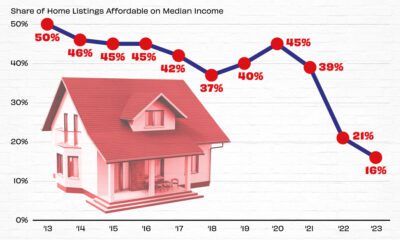
 Markets2 weeks ago
Markets2 weeks agoVisualizing America’s Shortage of Affordable Homes
-
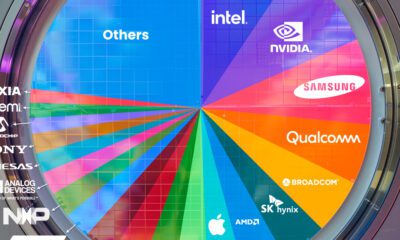
 Technology1 week ago
Technology1 week agoRanked: Semiconductor Companies by Industry Revenue Share
-
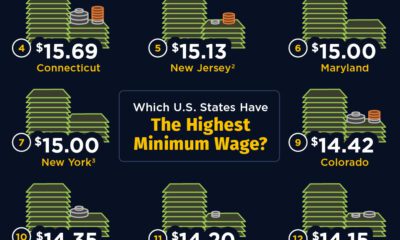
 Money1 week ago
Money1 week agoWhich States Have the Highest Minimum Wage in America?
-
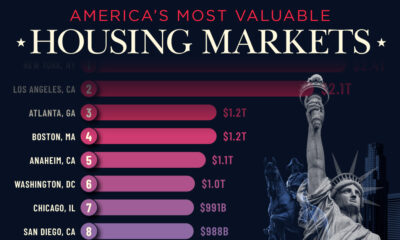
 Real Estate1 week ago
Real Estate1 week agoRanked: The Most Valuable Housing Markets in America
-

 Business2 weeks ago
Business2 weeks agoCharted: Big Four Market Share by S&P 500 Audits
-
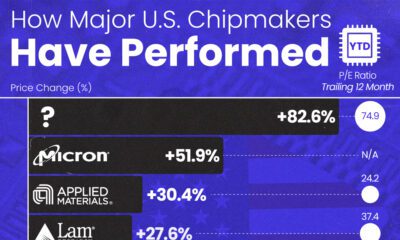
 AI2 weeks ago
AI2 weeks agoThe Stock Performance of U.S. Chipmakers So Far in 2024
-
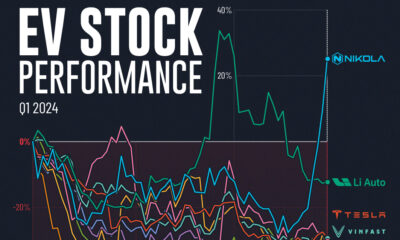
 Misc2 weeks ago
Misc2 weeks agoAlmost Every EV Stock is Down After Q1 2024
-

 Money2 weeks ago
Money2 weeks agoWhere Does One U.S. Tax Dollar Go?

